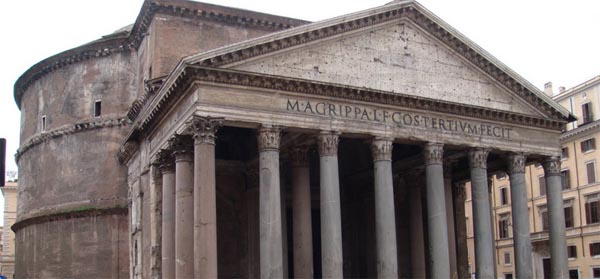
A pediment in Ancient Roman times was adopted from the ancient Greeks respectfully. Like much of Ancient Roman architecture, the use of pediments came from the ancient Greeks. Ancient Romans used these mainly for decorative design and not so much for structural significance. However, this was not always the case.
Ancient Roman architects used this technique in architectural beatification to finish doors, windows, and niches. Most of these pediments consisted of alternating segmented curved shapes and triangular designs. Broken pediments came later. Broken pediments got their name because they are broken at the apex of a triangular design. It should be noted, that broken pediments were more popular during the Baroque period and found much later and not so much in Ancient Roman times. The Baroque period style began in Italy around 1600 and spread to most of Europe. Pediments were also found in the Renaissance as this added to Ancient Roman architectural dominance and sophistication.
Some examples of pediments are found on top of temples and places of worship throughout ancient Greece and Rome. A famous pediment can be seen at the Pantheon in Rome, Italy and a famous Greek pediment at the Parthenon in Athens, Greece.
Today we still uses pediments in modern architecture. Many modern public buildings and homes incorporate these architectural design into construction for beatification purposes.

